Are you a Quiet Speculation member?
If not, now is a perfect time to join up! Our powerful tools, breaking-news analysis, and exclusive Discord channel will make sure you stay up to date and ahead of the curve.
Modern offseasons lead to weird metagames. Following the nonstop action in the June Grand Prix circuit, Pro-level Modern mostly wound down for the rest of the summer, a lull broken only by the SCG Modern Open in Charlotte. August saw a ton of PPTQs, IQs, and other regional events, but each had a different local flavor and metagame character. MTGO Dailies continued to fire, but with lower attendance than we have seen since 2012. Overall, these were the broader event-level factors which shaped the tier 1 and tier 2 decks throughout August. The results are a mix of familiar faces (Burn always prevails in an offseason) and some strange shifts that may or may not be a sign of things to come (Twin? Where art thou?).
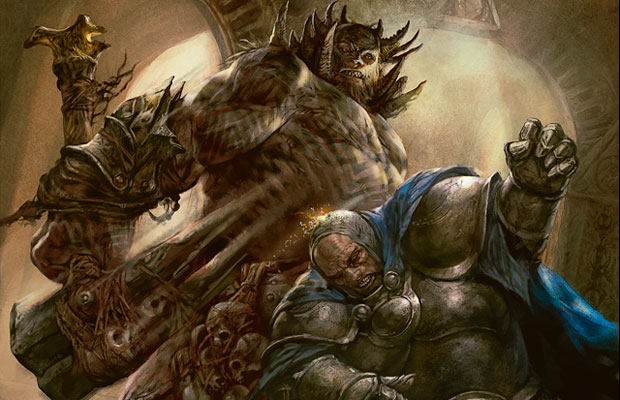
GP Oklahoma City is coming at the end of September, along with all the goodies we are still unwrapping from Battle for Zendikar: enemy manlands, here we come! Going into the GP alone, it's important to know what you are up against and how you can get ahead of the metagame. This article breaks down the big happenings from August so you are ready for Modern events throughout September.
[wp_ad_camp_1]
Tier 1 Decks
Metagame stats can take weird twists and turns during offseasons, and it's up to us to figure out if those fluctuations matter in the long run or if they are just temporary shifts. I don't remember a metagame breakdown that exemplified this more than our current one. With Origins added to the metagame and the June GPs over two months old, the metagame numbers were bound to exhibit some movement. I didn't expect this much movement, however, and we'll need to take a step back to see how these numbers fit in the broader metagame context.
As a quick reminder, these are prevalence-based tiering statistics: tier 1 decks should be considered as decks you are likely to face in tournaments and decks you are likely to bring to a Top 8. With that in mind, here are the tier 1 decks from 8/1-8/31.
At first glance, that probably seems like a Modern Usual Suspects list, full of mainstays like Merfolk, Affinity, Burn, Twin... wait a second. Where's Twin? Where's any Twin variant? When all the metagame dust settled at the end of August, there wasn't a single Twin deck that was even close to cracking the tier 1, prevalence-based cutoffs. Not even UR Twin, a Modern tier 1 regular for years, had the stats to cut it over August. Although the remaining tier 1 decks stayed roughly where they were in the 7/1-7/31 breakdown, the absence of Twin is jarring. To give us more metagame context, here's a table tracking the prevalence trends for both Twin and the other tier 1 decks. Take note of the huge drop in Twin we saw in August.
There are a few other metagame points to discuss with respect to the tier 1 decks, but the Twin developments are by far the most interesting. Let's start with Grixis Twin. Tasigur and company enjoyed 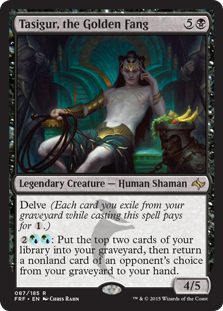 a lot of success in the June metagame, but has been declining gradually ever since. Given the deck's poor conversion rate from Day 2 to Top 32 at GP Charlotte, this overall drop makes perfect sense. Grixis Twin had a lot of hype going into Charlotte and, as is often the case with hyped decks, the deck wasn't as strong as its Day 2 turnout suggested. Players either realized this through internal testing or through looking at June Grand Prix results, because Grixis Twin saw consistent .6% share decreases in both the July and August metagame periods. Or maybe players were still bringing Grixis Twin to events and simply weren't getting to the top tables. A more plausible explanation is the parallel rise of Grixis Control, the "better" Grixis deck. Grixis Control saw an uptick in the past month, and some part of that was likely Grixis Twin converts. All of these factors shouldn't come as much surprise to anyone who has been following the metagame. These drops are also characteristic of offseason metagames, where prevalences tend to normalize around decks in the 8% range. By contrast, an on-season metagame can see decks polarize in the 10%-12% range based on a few high-profile finishes. Grixis Twin is a victim of this offseason normalization, in addition to those other factors mentioned above.
a lot of success in the June metagame, but has been declining gradually ever since. Given the deck's poor conversion rate from Day 2 to Top 32 at GP Charlotte, this overall drop makes perfect sense. Grixis Twin had a lot of hype going into Charlotte and, as is often the case with hyped decks, the deck wasn't as strong as its Day 2 turnout suggested. Players either realized this through internal testing or through looking at June Grand Prix results, because Grixis Twin saw consistent .6% share decreases in both the July and August metagame periods. Or maybe players were still bringing Grixis Twin to events and simply weren't getting to the top tables. A more plausible explanation is the parallel rise of Grixis Control, the "better" Grixis deck. Grixis Control saw an uptick in the past month, and some part of that was likely Grixis Twin converts. All of these factors shouldn't come as much surprise to anyone who has been following the metagame. These drops are also characteristic of offseason metagames, where prevalences tend to normalize around decks in the 8% range. By contrast, an on-season metagame can see decks polarize in the 10%-12% range based on a few high-profile finishes. Grixis Twin is a victim of this offseason normalization, in addition to those other factors mentioned above.
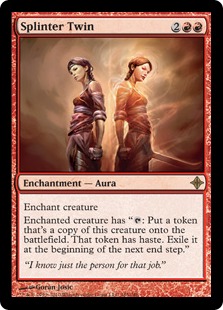 Then comes UR Twin. Although the traditional blue-red combo deck saw a huge drop between May and June, it was still hovering around the 5% range since then, even increasing slightly from June to July. Given UR Twin's longevity in Modern, this is about what we would expect of UR Twin in an offseason. It's a reliable fallback, but for every player who gravitates back to Twin, there's at least one more who wants to try something new out. Based on that model, we might expect Twin to stay in the 5%+ range, or even fall down to the high 4% range. Instead, Twin plummeted to 3.5%, which doesn't even make it the most-played tier 2 deck, let alone worthy of tier 1 status. At first, I thought this might be a consequence of a small sample size, but that is only partially supported by the data. On the one hand, our MTGO numbers have gotten worse and worse by the week, which Daily attendance hovering in the 8-10 player range (down from the 25-30 range in June). On the other hand, August saw more paper events (about 170) than any previous metagame breakdown period, and paper numbers are some of Twin's lowest.
Then comes UR Twin. Although the traditional blue-red combo deck saw a huge drop between May and June, it was still hovering around the 5% range since then, even increasing slightly from June to July. Given UR Twin's longevity in Modern, this is about what we would expect of UR Twin in an offseason. It's a reliable fallback, but for every player who gravitates back to Twin, there's at least one more who wants to try something new out. Based on that model, we might expect Twin to stay in the 5%+ range, or even fall down to the high 4% range. Instead, Twin plummeted to 3.5%, which doesn't even make it the most-played tier 2 deck, let alone worthy of tier 1 status. At first, I thought this might be a consequence of a small sample size, but that is only partially supported by the data. On the one hand, our MTGO numbers have gotten worse and worse by the week, which Daily attendance hovering in the 8-10 player range (down from the 25-30 range in June). On the other hand, August saw more paper events (about 170) than any previous metagame breakdown period, and paper numbers are some of Twin's lowest.
 Of course, another important reason for UR Twin's drop is its terrible showing at SCG Charlotte, where it only sent a single representative to Day 2. I considered writing this off as a one-time fluke due to bad pairings or some other tournament misfortunes, using an adjusted Day 2 metagame prevalence instead. Unfortunately, even this wouldn't have elevated UR Twin to tier 1. This .8% SCG Open prevalence also reflects (and, to some extent, exaggerates) the deck's metagame-wide drop, and was confirmed in top-table results at Worlds, the SCG Open itself, and some of the larger Italian and Japanese events. Based on this narrative and the events throughout August, it really does seem like UR Twin doesn't have what it takes to be considered tier 1 for this update, even if this might change once GP Oklahoma City rolls around.
Of course, another important reason for UR Twin's drop is its terrible showing at SCG Charlotte, where it only sent a single representative to Day 2. I considered writing this off as a one-time fluke due to bad pairings or some other tournament misfortunes, using an adjusted Day 2 metagame prevalence instead. Unfortunately, even this wouldn't have elevated UR Twin to tier 1. This .8% SCG Open prevalence also reflects (and, to some extent, exaggerates) the deck's metagame-wide drop, and was confirmed in top-table results at Worlds, the SCG Open itself, and some of the larger Italian and Japanese events. Based on this narrative and the events throughout August, it really does seem like UR Twin doesn't have what it takes to be considered tier 1 for this update, even if this might change once GP Oklahoma City rolls around.
Before we move to tier 2, here are a few observations on the other tier 1 decks' August movements:
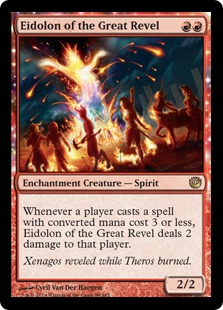 Burn decks often do well in an offseason, and August was no exception. It's linear and consistent enough to succeed in unknown metagames, cheap enough to attract new players entering the format at the local level, and versatile enough to adapt to different opponents. It struggles at larger events with too many rounds (Burn can only do so much against dedicated hate), but in the 7-8 round events like those dominating August, Burn is a great choice. This is an interesting datapoint for the future, because it suggests we should bet on Burn during Modern offseasons.
Burn decks often do well in an offseason, and August was no exception. It's linear and consistent enough to succeed in unknown metagames, cheap enough to attract new players entering the format at the local level, and versatile enough to adapt to different opponents. It struggles at larger events with too many rounds (Burn can only do so much against dedicated hate), but in the 7-8 round events like those dominating August, Burn is a great choice. This is an interesting datapoint for the future, because it suggests we should bet on Burn during Modern offseasons.
- Grixis Control continued its rise to the top, outpacing Merfolk and further cementing its status as a major format player. There was perhaps no stronger indicator of this than the Worlds 2015 metagame, which might seem odd because there wasn't actually any Grixis Control present at the event. Reading between the deck choices, however, we see a metagame built around fear and respect of the Grixis Control matchup. Coupled with the deck's broader success in paper, its continued presence on MTGO despite the decline in Daily attendance, and its strong SCG Charlotte showing, Grixis Control is sure to remain a top deck for months to come.
It's worth noting that Jund suffered a steep drop of 1.6% from July to August, even if I don't think this indicates anything more than a Modern offseason in action. Affinity saw a similar drop, but this happened in the context of Affinity being the best deck at Worlds 2015. These drops are expected in offseasons and we shouldn't read too much into them. I imagine both decks will be strong choices for GP Oklahoma City. Then there's Merfolk, a deck I predicted would be a top four deck in my last breakdown. We'll come back to my disappointing fish-friends after we look at tier 2.
Tier 2 Decks
Modern offseasons have a similar effect on tier 2 decks as they do on those in tier 1. The tier 2 options tend to open up in months like August, with more decks showing up as metagames are defined more by local options and less by major tournaments. In the 7/1-7/31 article, we had only 11 decks in tier 2. Today, we are up to 15, including poor UR/Grixis Twin and some rising stars from tier 3. The table below reflects August's tier 2 metagame. As in past articles, I consider "tier 2" to be those decks which you can win tournaments with and may see at events, but do not need to specifically prepare against.
I'll say one last word (promise!) on Twin's August decline before moving to the other tier 2 developments. With all three Twin archetypes down in tier 2, you should be preparing for any Twin deck, not just a specific representative. Indeed, looking at SCG Charlotte results, it was Temur Twin that was the breakout Twin deck of choice. Grixis Twin may have had more showings, but its 5.9% Day 2 share was comensurate with its metagame-wide prevalence. Temur Twin, by contrast, shot up to a 4.2% Day 2 share, far higher than its 1%-2% share in the normal paper metagame. This doesn't mean any one of Temur, Grixis, or traditional UR is necessarily better than any other. It does mean the metagame is open to different Twin variants, so you'll need to consider all of them in your own testing.
August's big tier 2 winner was Infect, and as I'm going to talk about in my Metagame Predictions section, I think this is only the beginning of Infect's return to glory. Infect tends to do well in overly fair 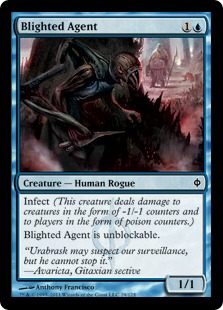 metagames where players are shifting towards grindy, midrange contests. This was exactly what happened back in February 2015 during PT Fate Reforged when pros got ahead of the Abzan-clogged field with some strong Infect finishes. It's true that our current metagame isn't quite as vulnerable to Infect as the Lingering Souls/Path to Exile/Siege Rhino-defined format of February. It's also true, however, that players are more prepared to outgrind Jund and Grixis Control than they are to handle small Infect swarms. The big difference today is the prevalence of Lightning Bolt, which was relatively underplayed back in February. Even decks ignoring Infect are still playing their Bolts, so there's probably a limit to how high Infect can rise. I do expect it to keep moving up through the ranks, and if the deck's metagame-wide pretrends are any indication (not to mention its strong performance at the SCG Cincinnati Modern Open, where two of its three players made the Top 8) , we'll be revisiting Infect in early October.
metagames where players are shifting towards grindy, midrange contests. This was exactly what happened back in February 2015 during PT Fate Reforged when pros got ahead of the Abzan-clogged field with some strong Infect finishes. It's true that our current metagame isn't quite as vulnerable to Infect as the Lingering Souls/Path to Exile/Siege Rhino-defined format of February. It's also true, however, that players are more prepared to outgrind Jund and Grixis Control than they are to handle small Infect swarms. The big difference today is the prevalence of Lightning Bolt, which was relatively underplayed back in February. Even decks ignoring Infect are still playing their Bolts, so there's probably a limit to how high Infect can rise. I do expect it to keep moving up through the ranks, and if the deck's metagame-wide pretrends are any indication (not to mention its strong performance at the SCG Cincinnati Modern Open, where two of its three players made the Top 8) , we'll be revisiting Infect in early October.
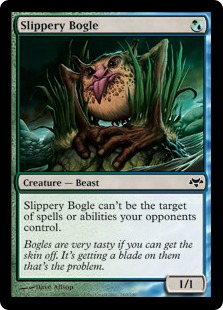 Turning to the offseason tier 2 winners, we see some movement in decks like Bogles, Ad Nauseam, and UWR Control. These kinds of decks tend to thrive in Modern offseasons and quickly fall away once metagames re-polarize back to the tier 1 fallbacks. Bogles is a prime example of this and is exactly what we expect of players metagaming against Grixis Control, Burn, and Affinity. Some interesting Worlds decks also made movement (UW Control, Living End, BW Tokens), but not enough to get them into tier 2: they don't have the metagame-wide numbers to justify their promotion. I expect many of these decks to fall back into the lower-tiers after September, and although something like UW Control might continue to rise, our 9/1-9/31 breakdown will likely see a tier 2 more similar to that discussed in the 7/1-7/31 writeup.
Turning to the offseason tier 2 winners, we see some movement in decks like Bogles, Ad Nauseam, and UWR Control. These kinds of decks tend to thrive in Modern offseasons and quickly fall away once metagames re-polarize back to the tier 1 fallbacks. Bogles is a prime example of this and is exactly what we expect of players metagaming against Grixis Control, Burn, and Affinity. Some interesting Worlds decks also made movement (UW Control, Living End, BW Tokens), but not enough to get them into tier 2: they don't have the metagame-wide numbers to justify their promotion. I expect many of these decks to fall back into the lower-tiers after September, and although something like UW Control might continue to rise, our 9/1-9/31 breakdown will likely see a tier 2 more similar to that discussed in the 7/1-7/31 writeup.
Final thought on tier 2: Modern's super scary combo decks continue to struggle even in the offseason. Amulet Bloom saw a 4%+ metagame 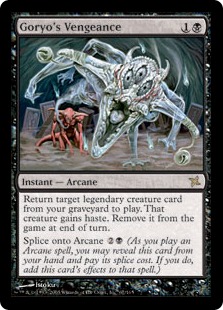 share back in July along with lots of GP play from the previous month. Looking back over August, the deck crashed down to the 2% range and saw only a single player during SCG Charlotte's Modern Open. Grishoalbrand did even worse, falling out of tier 2 and seeing less play than even Amulet Bloom. We would expect broken decks to fare well in offseasons when players forget about the matchup and experiment with decks that might be ill-equipped to handle the low-interaction linearity of Amulet/Grishoalbrand pilots. Instead, both decks crashed, which indicates to me something we've secretly (or not so secretly) known since June: these decks are strong but not nearly as broken as many make them out to be. If anything, the recent ban announcement should have emboldened players into investing in these decks, knowing that they survived a ban during a time full of torches and pitchforks. The continued mediocrity of Amulet Bloom and Grishoalbrand suggest that these decks are much tamer fixtures of the metagame than many believed. They'll definitely be back, but they'll also definitely fall out again as players police them.
share back in July along with lots of GP play from the previous month. Looking back over August, the deck crashed down to the 2% range and saw only a single player during SCG Charlotte's Modern Open. Grishoalbrand did even worse, falling out of tier 2 and seeing less play than even Amulet Bloom. We would expect broken decks to fare well in offseasons when players forget about the matchup and experiment with decks that might be ill-equipped to handle the low-interaction linearity of Amulet/Grishoalbrand pilots. Instead, both decks crashed, which indicates to me something we've secretly (or not so secretly) known since June: these decks are strong but not nearly as broken as many make them out to be. If anything, the recent ban announcement should have emboldened players into investing in these decks, knowing that they survived a ban during a time full of torches and pitchforks. The continued mediocrity of Amulet Bloom and Grishoalbrand suggest that these decks are much tamer fixtures of the metagame than many believed. They'll definitely be back, but they'll also definitely fall out again as players police them.
Modern Metagame Predictions for 9/1 - 9/31
Sometimes we knock the predictions out of the park. Other times, we fall a bit short. This was one of those "falling short" months for the metagame predictions, although I wasn't as far off on Merfolk as I was on Kiki Chord. Before we get to the metagame predictions for next month, let's reflect on the ones I made in the 7/1-7/31 article.
 Merfolk rises to a top four deck? Nope.
Merfolk rises to a top four deck? Nope.
It was so close too! Merfolk shot up by .7% between July and August, surpassing both Grixis Twin and UR Twin and closing the gap with Modern's big three (Jund, Affinity, and Burn). Then came Grixis Control. Those darn Grixis players also brought their deck up by .7%, matching Merfolk's rise and keeping the Lords out of the coveted top four position. Jace, Vryn's Prodigy was partially to blame for those, drawing attention to the deck and keeping hype around Grixis high. The Grixis deck is also just a very strong deck in its own right, and I think its ability to succeed off synergies around Snapcaster/Command/Bolt/Angler is greater than Merfolk's current potential to swim to the top. I expect Merfolk to stay in tier 1 for at least a few more months, but I also don't see it dethroning Grixis Control for the foreseeable future.
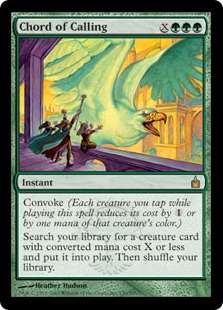 Kiki Chord rises to tier 2? Nope.
Kiki Chord rises to tier 2? Nope.
I don't think I missed too badly on the Merfolk prediction: it still went up by one slot and did enjoy a sizable increase in the metagame update period. Kiki Chord is another story. The deck stayed at its 1% metagame shares for both paper and MTGO, exhibiting virtually no movement despite plenty of online buzz around the deck. Jeff Hoogland definitely did his part in promoting and piloting the deck, Top 8ing with Kiki Chord in three separate tournaments throughout August. Unfortunately for Kiki and fans, not a lot of other players caught on to the deck, or maybe they did and didn't crack Top 8 at their respective events. It's possible the deck is missing something to make it big, in which case we are unlikely to see Kiki Chord enter tier 2 until after a set or two.
I'm bummed by Merfolk's falling short in tier 1, but think we will have some exciting metagame changes over September. Affinity's looking hot-hot-HOT right now, and we still have the Abzan vs. Jund conflict to play out (hint: so long as Affinity is a thing, Jund is going to win this battle). GP Oklahoma City is going to be huge in shaping the September and post-September metagame, and here are two predictions I think will come out of this upcoming month.
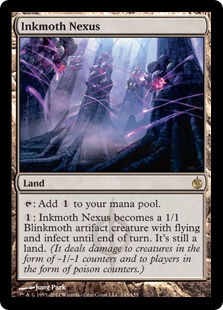 Infect will return to tier 1
Infect will return to tier 1
Looking only at the August pre-trends alone, Infect is making a comeback that could easily tip it into tier 1. Adding in the broader metagame trends (Infect is strong against all sorts of random unfair decks and decks that are too grindy) and the deck's awesome performance at SCG Cincinnati, and you have a formula for a very strong deck over September. I don't think Infect is going to take over the format or even necessarily surpass Merfolk. That said, I do see it crossing that tier 1 prevalence-based threshold following a (hopefully) commanding performance at GP Oklahoma City. Be prepared for the eventual Infect matchup by packing efficient, Bolt-style removal and by not trying to do anything too crazy with Grishoalbrand, Amulet Bloom, Ad Nauseam, or other decks that are going to get run over by 11/11 Inkmoths.
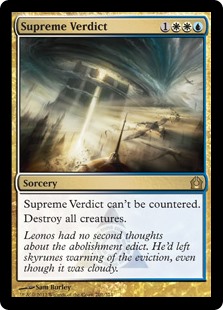 UW Control will rise to tier 2
UW Control will rise to tier 2
Modern players have been trying to get UW Control to work for years, notably following Gabe Nassif's UW Control list from PT Valencia in 2014. Yuuya Watanabe did well at Worlds 2015 with his own UW Control version, which followed another strong UW Control finish at SCG Charlotte by Michael Segal. That's a lot of UW Control in the air, and it comes alongside a 3% MTGO prevalence and a 1.4% paper one. These stats place UW Control just outside of tier 2 range and I can't imagine this deck stays underplayed for much longer. SCG Cincinnati already saw a few UW Control players in the Top 8/16, and it will be impossible for control fans or players looking for techy new decks to not take notice. I don't know which UW Control version is best (Dragonlord Ojutai? Emeria, the Sky Ruin?), but the deck as a broad classification is going to have a great September and you'll be getting ahead of the game by playing it (or preparing for it) right now.
That's all for the September update. Let me know in the comments what you think of the metagame stats and the analysis. Are there trends I missed? Decks that need more discussion? Predictions of your own for September? Starting next week we'll be doing a lot more Battle for Zendikar-focused articles, so let's get excited for those enemy manlands and more Allies as we head into September.






What do you mean by Bolt style removal for Infect? I’m hoping you just mean cheap because damaged based removal is the kind they like to face. They can use a growth spell to entirely negate a Bolt. They need something a bit spicier (VoV) to stop Path and friends.
Its true that they can pump in response, but bolt is still very good against infect. Bolt turn 1 glistener or noble hierarch? Yes please. Bolt your guy eot when you play him or on my turn? Yes go ahead and pump him while he has summining sickness please. You can also bolt in response to pump spells. Plus bolt decks tend to run more removal alongside lightning bolt. Even path and terminate aren’t surefire removal when they can get nullified by vines, spellskite, pierce, or blessing.
Obviously you don’t side bolt out or anything, but it isn’t ideal. Nothing is surefire (like I stated in my original comment) but there are several other removal spells that are harder for Infect to play around. I just don’t think it should be looked at like the pinnacle of Infect hate.
As Rackhamm said, it’s easy to underestimate how powerful Bolt is against Infect. The Hierarchs alone make the spell very powerful in the matchup, as does the prospect of a turn 1 Glistener Elf. That’s not a card you want to Path: transitioning from turn 1 G-Elf into turn 2 Agent with Vines backup is not what I want to help an Infect player into. I wouldn’t want to rely on Bolt alone, but Bolt in tandem with the usual suspects of Snapcaster (in URx decks), Path (in UWR decks), and Terminate/Decay (in BGx decks) is way stronger and scarier than just those other removal spells without Bolt behind them.
All versions of Twin play similarly enough, and if you combine their numbers URx Twin still is the most represented deck in Modern. It feels wrong not to include URx Twin as a tier 1 deck just because there are differences on the splash color. By the same token, I wouldn’t read too much in the decline of the deck.
I agree with this point – I’ve faced UR Twin, Grixis Twin, and Temur Twin, and I can’t say that the strategy was very different. Grixis has more of a control Plan B while Temur favors midrange, but at its heart, it’s still an interactive deck that has a combo win-con in its back pocket. I think it’s probably time to revisit whether they should all be considered separate decks or logged under “Splinter Twin”.
As for the decline… can at least some of it be attributed to the rise of Grixis Control? It seems to me that the natural crossover for a disillusioned (or bored) Grixis Twin player is to take the combo pieces out and just play Grixis Control instead.
Absolutely agree that separating the twin variants seems wrong. Does adding tarmogoyf honestly change the entire deck? no. How about replacing roast with terminate and adding tasigur? nope.
As an opponent you play in fear of the exact same thing: Eot exarch, untap, twin. That is what defines these decks, not whether they play tasigur, tarmogoyf, or electrolyze (or whatever card we consider to be the defining difference for straight UR).
I definitely agree that Grixis Control’s rise is at play in Grixis Twin’s drop. From the article: “A more plausible explanation is the parallel rise of Grixis Control, the “better” Grixis deck. Grixis Control saw an uptick in the past month, and some part of that was likely Grixis Twin converts. ” I’m not sure what percentage of Grixis Control mages are in this category, but as you suspect, I don’t think they are insignificant.
I don’t like combining multiple decks into one supertype because you lose a lot between the different versions. UR Twin plays very differently from Grixis and Temur Twin (those latter two are more similar), so it’s not quite fair to combine them. As I said in the article, “the metagame is open to different Twin variants, so you’ll need to consider all of them in your own testing.” Going into September, I would keep testing and expectations open around all three Twin versions. You might face any of them because, as you suggest, the collective URx Twin share is definitely high enough to guarantee the matchup. It’s up to you to figure out which specific versions you prepare for.
This is the first time where no single Twin deck qualified for tier 1, which created this interesting issue around the deck classification. Normally, you have at least one Twin deck up there, so players can be ready for that main version and then be mindful of the secondary ones. If this issue persists, we can maybe revisit how Twin is classified, but for the most part I prefer the granularity gained by keeping them distinct. It’s definitely helped us in the past to observe trends, and we lose more than we gain if we eliminate that detail.
That’s completely reasonable, and the article do go in great lenghts to explain what’s going on. I still don’t think that UR twin plays that differently from the other versions though, but this might because of bias from the decks I usually play (where I won’t change anything in deck building wheter they have tarmogoyf, tasigurs or not)
What you lose by not grouping them together is that someone who glances over at the Top Decks table on the front page might think that ” Twin” suddenly became unpopular. Meanwhile, someone who read all the way through and paid attention could see that still is important to prepare for any versions of Twin on the aggregate.
Anyways, I love those articles and please keep them coming. : )
I was looking at some stuff, and it seems that some pro players thought that abzan was better positioned at worlds/the better deck than Jund. Your thoughts on that?
I think Abzan is definitely poised for a comeback. Will it surpass Jund in September? I don’t think so: there are still enough matchups where Jund is going to be a better option. Will Abzan get back to tier 1? That’s much more likely, and I imagine we’ll see it by the end of October (if not earlier). Abzan is a great choice against a Jund and Grixis heavy metagame, which is probably what many of the pro players are expecting. Then again, the last time the metagame polarized heavily towards Abzan was February 2015, and that saw a huge movement from the unfair decks like Infect. We are already seeing Infect rising up, and I think this metagame knowledge will keep players ahead of a possible Abzan spike. The deck is bound to go up, but I think it won’t be as successful as many are predicting.
Did you forget junk???
There wasn’t much to say about Abzan in this update. It’s at around 3% of the metagame, which is roughly where it was last time. There are signs that Abzan might make a resurgence in September, but those signs are mostly from September events, not from those in August. The only promising datapoint for Abzan mages is the 4.2% prevalence in Day 2 of SCG Charlotte, but unfortunately the deck’s paper and MTGO shares were a lot lower over the month.
Excellent article, I really enjoy these pieces because I compare the “perceived metagame” that I imagine is true based on what I face on MTGO, to the “expected metagame” I deduce based on deck discussion/article hype/recent event results to the “statistical metagame” that does a lot to provide weight and stats to a topic that is often fleeting and difficult to measure. Each of these “metagames” often contribute in varying ways to what we actually see at events, and I think it’s essential to recognize the benefits and downsides to each and see metagame info for what it is: a tool to help us prepare for events.
A minor point: this discussion about grouping variations on archetypes comes up often, and there are good arguments for both sides. While it’s true that it can be dangerous to lump Temur/Grixis/UR Twin together under the same umbrella (as they have similar strategies but certain matchups can exaggerate the differences in deck composition) I have always been of the opinion that for the purposes of metagame information, they should be grouped. While it is undeniably true that no individual Twin archetype experienced enough success to place it in the Tier 1 bracket, combining the results shows us that Twin Variants account for 9.5% of the overall metagame, more than any other macro-archetype in the format.
This is important because to the casual reader, it can paint a different picture of “Twin on the downswing”. I am aware that you anticipated this danger as you talked at length about the possible reasons for Twin’s perceived decline, but the fact remains that there is a danger to this kind of thinking, as it can lead us down a path of: “Twin is under-represented, it’s safe to play something that loses to Twin, run headfirst into Twin variants that are almost 10% of the field”.
On the other hand, the danger of grouping Twin variants together is that it can be harder to perceive small shifts in representation. Combined, the Grixis/UR/Temur variants have a 4.2/3.5/1.8% representation, but this could theoretically shift to 1.6/0.8/7.1% in favor of Temur and those of us just paying attention to “Tier 1” numbers only wouldn’t catch the shift. This is an exaggerated point, of course, but with smaller numbers and shifts that don’t elevate a particular Variant to Tier 1, we could (and have in the past) see shifts where Temur Twin surpasses U/R in popularity for a short time and takes the field by surprise because they were caught looking at Tier 1 Combined statistics only.
Again, there are benefits and downsides to both strategies, I have just found that the risks involved with splitting variants can often be greater than the risks involved with grouping them. Regardless, excellent article and great points!
Great article Sheridan!
As much as I appreciate the huge deal it should be to gather all info and keep track of a LOT of decks to finally present us the charts, I also enjoy how you explain the changes and make some good points. Keep it up man.
Taking a couple steps back and seeing the data of the last months (with MS Excel help), I’m starting to clearly see a lot of trends that I supposed were a thing, but couldn’t mesure feasibly. In fact, I feel like giving some of my own September predicitons:
1) Burn will keep rising, maybe to April levels (9.2%). Merfolk and Infect will go on too!
2) Seems like Jund hit its top in July. It will fall to 3rd place.
3) Affinity falls along Jund, but not as hard. I don’t see Robots with less than 6% though.
4) Grixis Control won’t be able to keep up with Merfolk, which is sad being a grixis player myself.
5) Infect is back! Grixis Twin was the first step to Tier 1.
Also, on the Twin topic. As Trevor stated, grouping them could be tricky. One can argue about gameplan and whatnot, but in the long run, metagame wise, having them broken down into 3 or 4 (I’ve seen some jeskai twin) different decks is the wise choice. A combined 8% may be hiding some weird 6%/1.5%/1% spread (again, exaggerated, but you get the point).
Sure! It’s weird to look at the Tier 1 tables and not seeing the premier combo deck of modern, which somehow defines the Turn 4 rule (I know…), but that’s how things are. I used to think the UR Twin decline was just player migrating to the Grixis variant, but seeing both decks on the decline means something else. Maybe Grixis Control? I don’t know. But be sure it’ll come back. My bet is on the October metagame breakdown. Cheers!